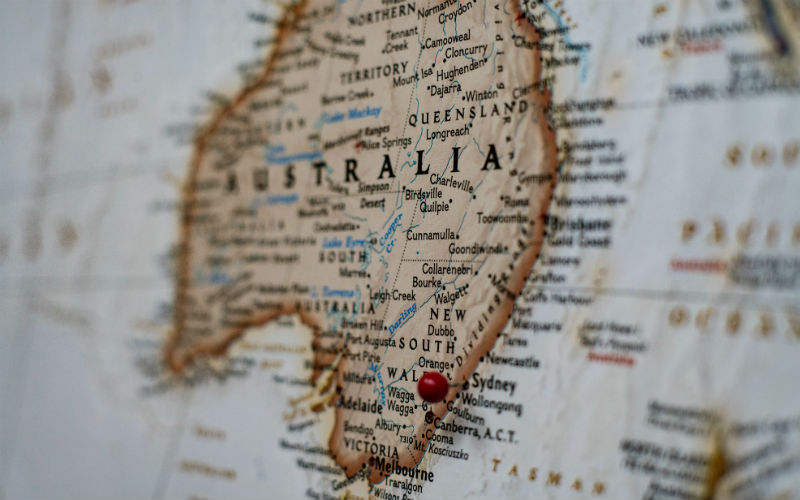On average, women earn $1 million less than men over their lifetimes and retire with $136,000 less in their super accounts. Let those numbers sink in for a moment.
The current gender pay gap is currently sitting at 13.3% as of February 2023. According to the ABS, women earn $253.50 less than men each week - which ultimately impacts our nest eggs.
With more time out of the workforce due to caring responsibilities, and a higher rate of part-time work, women often retire with far less superannuation than their male counterparts.
What is the gender super gap?
The Australian Tax Office has revealed that the biggest financial gap between men and women now sits in their super accounts.
Industry Super Australia predicts that by 2030, the average superannuation balance at retirement for men will be $432,000, while for women it will be $262,000 - that’s a difference of $170,000.
Research conducted by major bank ANZ found 35% of women felt they would be able to save enough money to last them to the end of their lifetime, compared with 45% of men who felt this way. No wonder this is the case when you consider the future projection of super funds in 2030.
New analysis from Industry Super Australia revealed about one million Australian women have been collectively deprived of more than $1.3 billion in super contributions they are owed in a year.
In female-dominated industries like childcare, aged care, hospitality, and personal services, about a quarter of female workers suffer super underpayments, costing them up to $40,000 from their retirement nest egg.
The latest analysis of the 2019-20 tax data shows that one in five women are underpaid super.
Younger women on lower incomes are greatly impacted – almost 40% of women in their 20s earning less than $25,000 were short-changed. On average this cohort missed out on $570 a year.
What factors contribute to the super gap?
The Penny for your Thoughts Podcast spoke to Select Advice Manager with UniSuper, Renae Anderson, who said there are a number of cultural and economic factors that drive the retirement income gap.
She said that the gender pay gap sits at 13.3%.
“Women are likely to take time out of the workforce to care for children or family - on average, this is for around five years,” Ms Anderson said.
“We also work part time, or return to work part time for some of our career, often work non-paid jobs, and are likely to take the lower paid jobs in the community.
“So if you put all of this together, we've learned from women who've retired before us that it's created this gender super gap.”
Other significant drivers include:
- Fewer women occupy senior executive and board-level positions.
- Women typically retire earlier than men on average but live longer than men. This means women’s savings are often not sufficient enough to support them in retirement.
A report conducted by Industry Super Australia also found a 90s-era law that allows super to be paid quarterly is contributing to the unpaid super scourge.
For example, a 30-year-old earning the age-based median wage could be $8,000 better off at retirement if paid super fortnightly instead of quarterly, because contributions would compound for longer if paid more frequently.
Industry Super Advocacy Director Georgia Brumby said modernising the law so that super is paid on payday will make it easier for workers to keep track of payments.
“It is a crushing financial blow that many women – who are still retiring with a third less super than men – won’t recover from and can wipe out 10% of their savings,” Ms Brumby said.
“Aligning payment of super and wages is the right thing to do by workers, boosts government revenue, lifts investment returns and puts all employers on a level playing field.
“Paying super on payday will help women claw back more super now, while the government is unable to commit to other equity measures like paying super on paid parental leave.”
How can the government help close the gap?
According to Ms Anderson, the government has plenty of options it can implement to help close the gender super gap.
1. Super on paid parental leave
Ms Anderson said the government could make it policy to pay super on paid parental leave.
“This is a really important one to call out,” she said.
“You’re forced to receive super when you take leave for a holiday, but not to take leave to have a child. It just makes no sense to me.”
2. Alter the low income super tax offset
Another option Ms Anderson recommended was altering the low income super tax offset.
“This was set up to ensure that the tax rate on compulsory contributions to super for low income earners isn't higher than their own tax that they would be paying otherwise. This is an offset of $500,” she said.
“It was set a few years ago, and actually needs to move in line with the tax brackets that have moved. It should increase to $640.”
3. More marketing on the government co-contribution scheme
You could also consider the government’s co-contribution to super incentive. But how does it work?
If you’re earning roughly $57,000 or less, and you make an after tax contribution to your super (money that goes from your bank account to your super), the government will pay up to 50 cents for every dollar depending on how much you earn and how much you contribute.
Now, there is an income test and other eligibility criteria you will have to meet e.g. age, residency status, etc. The super boost scheme ends 30 June 2023.
How can single women get ahead on saving for retirement?
Financially, the difference between a single woman and married woman is you potentially have two incomes as a couple instead of one. More importantly, as a couple, you have two sets of knowledge.
But as Ms Anderson puts it, you’re not alone in this and your super fund is set up with the sole purpose of helping you achieve your best retirement.
“You can be confident you are doing all that you can with what you have and how you get that confidence is simply by talking to us,” she said.
“A third of people don't know they can actually get financial advice from their super fund.
“As a single woman, one of the steps you can take is by calling up your super fund and asking very basic questions, so by the end you’ll have a better understanding of where you’re at and if you should be doing something better.”
Here are the following questions to ask your super fund:
- How much do I have?
- What does it mean?
- What are my options?
- Where should I start?
How much super should you have by the time you retire?
This is probably the question that’s been circling your mind over and over again, but it’s nearly impossible to say for certain because everyone is different.
It also depends on the rather bleak question - when do you think you’ll die?
One major point Ms Anderson reiterated was the fact that everyone’s retirement is going to be different, so there’s no one right answer when it comes to how much money you should have saved.
“However, there are actually two main inputs that are the same with everyone. And that is, how much it costs to do the things that you want to do, and how long you're going to stay there for,” she said.
“Using basic online calculators you can actually work out what track you're on. It’ll tell you how much you’ll have to spend in retirement if you keep making the same constant contributions.
“From there, you can then compare that to how much you're spending now and decide if that's enough. If you find it's not enough, then you know you need to do something different.”
To ease your mind and give you some actual figures, here’s the dollar amount the Association of Superannuation Funds of Australia (ASFA) recommends to have by the time you hit retirement age (67 years).
The amount you need saved for retirement to live your last years out comfortably are $690,000 for a couple and $595,000 for a single. This equals to $69,691 a year for a couple and $49,462 for a single.
These figures take into account all the expenses you’ll likely have to cover such as: housing costs, electricity, food, phone bundles, household goods and services, clothing and footwear, transport, health services, and leisure.
How can women boost their super balance?
It’s not all doom and gloom. There are government incentives to motivate you to save for your own retirement.
1. Salary sacrificing
Salary sacrificing is the most common way to boost your super and involves reducing your take-home pay to put more money into your nest egg.
You can ask your employer to pay part of your pre-tax salary into your super account. This is on top of what superannuation your employer is likely already paying you under the Superannuation Guarantee, which should be no less than 10.5% of your gross (before tax) annual salary.
“If you earn $70,000, and you salary sacrifice $100, it will be taxed at 15%. So $85 goes into your super,” Ms Anderson said.
“But if your employer paid that into your bank account instead, you'd only get $67.50. So that's an immediate uplift in what you have after tax.”
Keep in mind there is a limit as to how much extra you can contribute to your super per year at the 15% tax rate. The combined total of your employer and salary sacrificed concessional contributions can’t be more than $27,500 per financial year.
2. Catch up contributions
If you make concessional contributions of less than the annual cap of $27,500 p.a. for the 2022/23 financial year, you can carry forward any unused portions and contribute more now. This is known as catch-up concessional contributions.
Catch-up concessional contribution can accrue from 2018/19. Unused cap amounts can be carried forward for up to five years before they expire. To be eligible, your total super balance must be below $500,000.
For women in particular, it provides greater flexibility if you’ve had broken work patterns or can’t afford to contribute extra in a particular year - for example, during maternity leave.
Example:
| Financial year | Concessional contribution cap | Contribution made | Carried forward cap available at the start of the year | Unused cap that can be carried forward from the end of the financial year |
| 2019/20 | $25,000 | $0 | $25,000 | $25,000 |
| 2020/21 | $25,000 | $15,000 | $50,000 | $35,000 |
| 2021/22 | $27,500 | $0 | $62,500 | $62,500 |
| 2022/23 | $27,500 | $10,000 | $90,000 | $80,000 |
Picking out a super fund: stick with your employer’s fund or do some extra research?
There’s plenty of choice out there, so you don’t necessarily have to stick with your employer’s fund.
Further, if you simply opt for the employer fund and you’ve changed jobs a few times, you might be paying for several different super funds.
Ms Anderson said there are always three things you should look for when comparing super funds.
“A fund that has strong long term performance will give you more money at the beginning of your retirement and also through your retirement years,” she said.
“The last two things to keep an eye on are fees and services provided. If you look for a fund that has low fees and strong performance, that's when you'll know that you're getting value for money.”
Past performance is not an indicator of future performance - and while you can’t control performance, you can control the fees you pay.
If you’re still unsure, the ATO’s Your Super Comparison Tool displays a table of different Super products ranked by fees and net returns. In other words, it does a lot of the heavy lifting for you.
You can also speak with a financial advisor if you’re wanting more personal advice on choosing a super fund, making super contributions, and other retirement planning strategies.
Image by freepik



 Emma Duffy
Emma Duffy
 Dominic Beattie
Dominic Beattie












